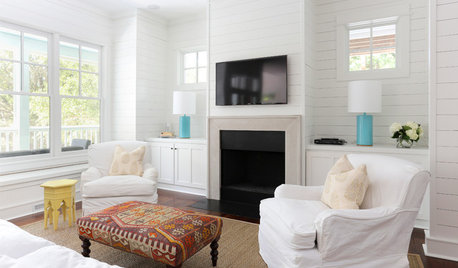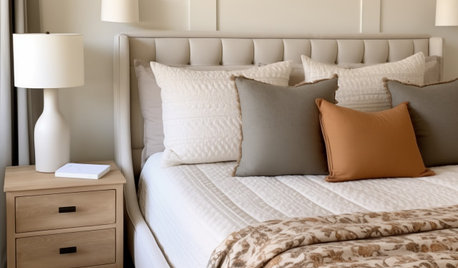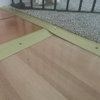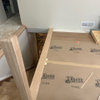We're installing carpeting in a home we recently purchased, and will be moving into. New carpet will be replacing old carpet. Most of the home has oak hardwood in the common areas, the wall to wall carpet is in the bedrooms/hallways/closets and two stairways, and is/will be installed over wood (plywood?) subfloor. One of the stairways has wide stairs, which "flare" at the bottom, and the stair treads and risers have a slight curve to them. The stairs have a reveal of oak hardwood on the side edges with the carpeting in the middle. We're doing bullnose wrap (not "waterfall") on the stairs. Home is 18 years old, and I believe the existing carpet is original. Old pad is the shredded rebond, and is installed over the wood subfloor.
I've done some homework, and have chosen a nylon carpet, density about 3800, twist about 6, in the 6,6 type nylon by Karastan. (Style name is "Cellini" aka "Cambridge Shores"). Planning to use the "Healthy Choice" 10 lb. pad, which I believe is made by Shaw. Any opinions on this pad? I've heard mixed reviews.
I was told by the guy who cleans my carpet, that if I caulk between the sheetrock and the subfloor (behind the baseboards) while the old carpet is out, I can eliminate/minimize the black line that develops around carpet edges from air flow. My installer says to caulk, he needs to remove old tack strip, then caulk, then replace with new tack strip.
It's a big project, so a significant cost, and I'm looking for advice on what to look for/ask for in terms of install.
I've heard many install horror stories, and want to avoid problems, if possible. My carpet vendor is a local store that has been in business for many years, and is designated as a "certified installer" on Karastan's website, whatever that means. The installers are employed by the carpet store.
I've asked to see an installation plan, showing planned seam placement.
Any other tips to ask for in terms of install?
I heard to ask for machine stretching (didn't think they did it any other way).
Also heard to ask that seams be "double-glued" (what does this do)?
Some bidders for my job acted like they never heard of caulking the air gap between sheetrock and subfloor to eliminate the black line, others said they do it routinely, but some said that expanding polyurethane foam was the only product that would give an effective seal, whereas others said that would make a mess and get in the way of tucking the carpet under the baseboards. These folks thought a regular, flexible caulk was the right product for the job. Any opinions on this?
One person told me that they would bevel-cut the pile of the carpet on the stair risers, so that it angled back (getting shorter) to the point where it meets the wood part of the stair, to avoid a raggedy-looking edge, another installer said shaving the pile was an invitation to disaster. Any advice here?
One installer made a big deal about asking whether I wanted the back stairs (which reverse direction at a landing) to have the nap all facing the same direction, or if it should turn with the stairs. I've only ever seen the nap always facing the leading edge of the steps, and if the steps turn direction, so does the nap. Is there really any other way?
I'd also like to clean when they remove the old carpet. Not sure what to expect under there. I know the previous owners had pets (though there seem to be no stains or smells). Someone I know told me they had to pull out all the old staples from old padding on their project. Is staple removal typically included in a labor quote--or do they leave the old staples in?
Can carpet be installed with enough care to not damage baseboards? We just spent a fortune on a top-notch paint job including spray painting all wood trim, and our baseboards are pristine. Is it unreasonable to expect carpet installation not to damage the baseboards? (I've considered covering painted baseboards with painters masking tape to protect--any idea on wheather this would be effective?--other suggestions?
Is there anything I should know about seam placement? Should I ask for a drawing for pad seam placement also?
Am I opening a "can of worms" by having old tack strip removed and new installed? Any advice here?
If you are an expert--or have gone through this before as a customer, and have any advice to share on these or other install issues, I would very much appreciate it. Thanks!

















glennsfc
vickevetteOriginal Author
Related Discussions
Delivery checklist
Q
Post Inspection Checklist
Q
Cabinets are being installed. Checklist for quality?
Q
Granite Install Tomorrow! Checklist help?
Q
carusoswi
carusoswi